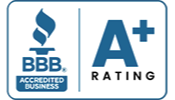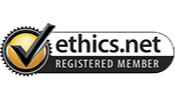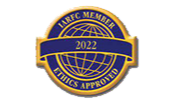Ask an Advisor: Best Strategies for Charitable Giving in 2024
But navigating the complexities of charitable giving can be challenging. That’s where asking an experienced fiduciary advisor can make all the difference. A knowledgeable advisor can help you develop a giving strategy tailored to your unique financial situation, helping your contributions effectively support the causes you care about while complementing your overall retirement plan.
In this blog, we’ll provide insights for HNW retirees looking to enhance their year-end giving strategies. Here’s what you need to know to make the most of your charitable contributions.
Why Charitable Giving Matters
Charitable giving is more than just a financial transaction; it’s a powerful way to make a meaningful and lasting impact on the causes you care about. Beyond the immediate benefit to the organizations and communities you support, it helps align your values with your financial plans. This creates a dual benefit of doing good while managing your wealth strategically.
With ongoing economic shifts and changes in tax laws, understanding the best ways to give can help you maximize your philanthropic contributions and financial position. Choosing the right methods and timing for your donations can help reduce your taxable income, minimize capital gains, and potentially lower your estate taxes. Let’s take a look at some of the best strategies you can use for your charitable giving efforts.
1. Leverage Donor-Advised Funds (DAFs)
A Donor-Advised Fund (DAF) is one of the most popular and flexible strategies for charitable giving. It allows you to contribute assets—such as cash, stocks, or real estate—to a tax-advantaged fund, which can then distribute grants to multiple charities over time. DAFs offer several benefits, including potential tax deductions, centralized giving, and investment growth opportunities. Here’s a closer look at the advantages:
- Tax Benefits: Donors can receive an immediate tax deduction for a DAF contribution, which is especially beneficial in high-income years. For 2024, the deduction limit for gifts to donor-advised funds is up to 30% of adjusted gross income (AGI) for non-cash assets held for more than one year and up to 60% of AGI for cash donations.
- Flexibility: DAFs can distribute funds to multiple charities over time, allowing donors to choose the timing and recipients of their donations according to their philanthropic goals.
- Investment Growth: While the assets are held in the DAF, they can be invested, potentially growing the value of the charitable gift over time. This growth can result in even more significant support for the charities of your choice.
 2. Utilize Qualified Charitable Distributions (QCDs)
2. Utilize Qualified Charitable Distributions (QCDs)
A Qualified Charitable Distribution (QCD) allows you to transfer funds directly from your IRA to a qualified charity, helping to lower your taxable income. This strategy is particularly beneficial for those taking Required Minimum Distributions (RMDs), as it allows you to satisfy the RMD requirement without increasing your taxable income while supporting a cause you care about.
- How It Works: If you are an IRA owner aged 70½ or older, you can exclude up to $100,000 of QCDs from your annual gross income. For married couples, each spouse aged 70½ or older with their own IRA can exclude up to $100,000, for a combined total of up to $200,000 annually.
- Tax Benefits: QCDs are excluded from your taxable income, providing a tax benefit even if you do not itemize deductions. This makes them especially valuable for those who typically take the standard deduction.
- Eligibility: QCDs can only be made from IRAs, not 401(k)s or other retirement accounts. As always, it’s important to consult with a fiduciary advisor to determine eligibility and whether this strategy is right for you.
3. Bunching Charitable Contributions
For many taxpayers, itemizing deductions can be challenging due to high standard deduction thresholds. In 2024, the standard deduction amounts are $14,600 for Single or Married Filing Separately, $29,200 for Married Filing Jointly or Qualifying Surviving Spouse, and $21,900 for Head of Household. To exceed these thresholds and benefit from itemizing, “bunching” charitable contributions into a single tax year can be an effective strategy.
- How It Works: Instead of spreading donations evenly over several years, you “bunch” two or more years’ contributions into one year. This allows you to itemize deductions in the year of the large donation, potentially maximizing your tax benefits while taking the standard deduction in other years.
- Who Benefits: This approach is particularly advantageous for high-net-worth individuals with fluctuating incomes or those anticipating a high-income year when maximizing deductions would be most beneficial.
4. Consider Charitable Remainder Trusts (CRTs)
A Charitable Remainder Trust (CRT) is a powerful tool for individuals seeking income streams while making a meaningful charitable contribution.
- How It Works: You contribute assets to the CRT, providing you (or other beneficiaries) an income stream for a set period or lifetime. At the end of the trust term, the remaining assets are donated to your chosen charity.
- Tax Benefits: The donor receives an immediate charitable deduction based on the present value of the remainder interest that will eventually go to charity. Appreciated assets can be sold within the CRT without incurring immediate capital gains taxes.
- New IRS Guidance: In 2024, the IRS has issued new guidance on calculating CRT payouts, making it crucial to consult with a fiduciary advisor to ensure compliance and maximize benefits.
5. Incorporating Charitable Giving into Estate Planning
Estate planning and charitable giving often go hand in hand for HNWIs. Incorporating charitable strategies into your estate plan can help meet your philanthropic goals while minimizing estate taxes.
- How It Works: One of the simplest ways to include charitable giving in your estate plan is by making properly structured gifts and donations. You can remove assets from your estate before the total is tallied and taxed.
- Tax Benefits: For 2024, the annual exclusion from the gift tax—the amount you can gift annually to individuals without incurring tax consequences—has increased from $17,000 to $18,000 per recipient. The lifetime exclusion amount, the total amount you can transfer without incurring federal gift or estate taxes, is currently $13.61 million per individual. Staying informed about these limits is essential, as they can change periodically.
- Review and Update: Given the potential for changes in tax laws, it’s crucial to review and update your estate plan regularly to help ensure it aligns with current regulations and your personal and financial goals. Working with a fiduciary advisor can help you navigate the complexities of gifting and estate planning, helping align your financial decisions with your long-term objectives.
 Partner with a Fiduciary Advisor: A Strategic Approach to Giving
Partner with a Fiduciary Advisor: A Strategic Approach to Giving
Charitable giving can be complex, and the rules and regulations change frequently. This is where working with a fiduciary advisor can be beneficial. At Agemy Financial Strategies, we understand the unique needs of HNWIs in Connecticut, Colorado, and beyond and offer personalized strategies to help you maximize your charitable impact while aligning with your financial goals.
- Risk Management: We meticulously vet and evaluate potential beneficiaries to help ensure your contributions to reputable and financially stable organizations. This thorough due diligence minimizes the risk of misappropriating or misusing your funds.
- Customized Strategies: We understand that each giver has unique financial circumstances and philanthropic goals. Our team works closely with you to develop a personalized giving strategy that aligns with your values, maximizes the impact of your contributions, and optimizes your tax benefits.
- Legacy Planning: If you aspire to create a lasting philanthropic legacy, our fiduciaries can help guide you. We assist in setting up trusts, endowments, or foundations that perpetuate your giving beyond your lifetime.
- Compliance and Reporting: Agemy Financial Strategies is well-versed in the complex regulations and reporting requirements associated with charitable giving. We handle all compliance matters so that your donations adhere to legal guidelines and that you receive the full range of tax benefits.
Make Your Impact Count in 2024
At Agemy Financial Strategies, we are committed to providing our clients guidance on charitable giving as they plan for retirement. We recognize your generosity’s profound impact on your community and financial well-being.
Our team of experienced fiduciaries is here to support you every step of the way, helping your retirement years be both fulfilling and financially sound. With our help, you can create a lasting legacy that reflects your values while potentially maximizing your tax benefits.
Contact us today to set up a complimentary strategy session and discover how we can help you achieve your philanthropic and financial goals.
Disclaimer: This content is for educational purposes only and should not be considered financial or investment advice. Please consult with the fiduciary advisors at Agemy Financial Strategies before making any investment decisions.













Leave a Reply
Want to join the discussion?Feel free to contribute!